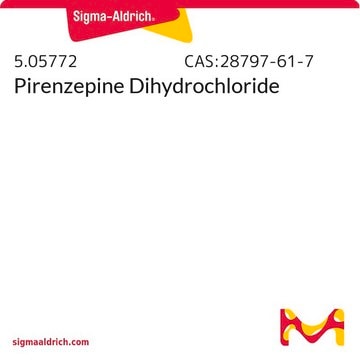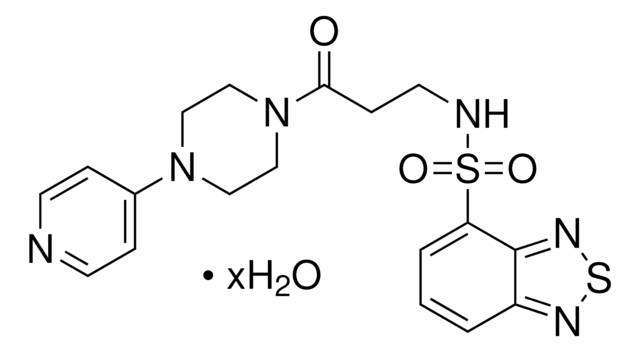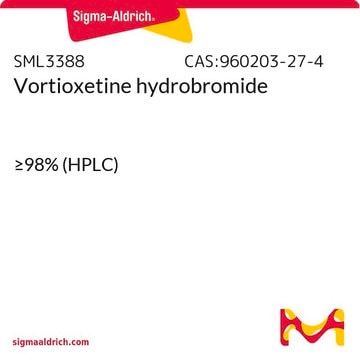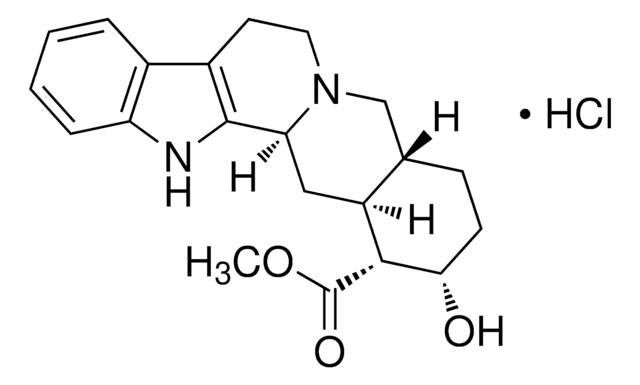P7412
Pirenzepine dihydrochloride
≥98% (TLC), powder
Sinónimos:
5,11-Dihydro-11-[(4-methyl-1-piperazinyl)acetyl]-6H-pyrido[2,3-b][1,4]benzodiazepin-6-one dihydrochloride
Seleccione un Tamaño
160,00 €
Seleccione un Tamaño
About This Item
160,00 €
Productos recomendados
Ensayo
≥98% (TLC)
Formulario
powder
color
white to light yellow
solubilidad
H2O: 50 mg/mL
cadena SMILES
Cl[H].Cl[H].CN1CCN(CC1)CC(=O)N2c3ccccc3C(=O)Nc4cccnc24
InChI
1S/C19H21N5O2.2ClH/c1-22-9-11-23(12-10-22)13-17(25)24-16-7-3-2-5-14(16)19(26)21-15-6-4-8-20-18(15)24;;/h2-8H,9-13H2,1H3,(H,21,26);2*1H
Clave InChI
FFNMBRCFFADNAO-UHFFFAOYSA-N
Información sobre el gen
human ... CHRM1(1128)
Descripción general
Aplicación
Acciones bioquímicas o fisiológicas
Características y beneficios
Precaución
Código de clase de almacenamiento
11 - Combustible Solids
Clase de riesgo para el agua (WGK)
WGK 2
Punto de inflamabilidad (°F)
Not applicable
Punto de inflamabilidad (°C)
Not applicable
Equipo de protección personal
Eyeshields, Gloves, type N95 (US)
Elija entre una de las versiones más recientes:
Certificados de análisis (COA)
¿No ve la versión correcta?
Si necesita una versión concreta, puede buscar un certificado específico por el número de lote.
¿Ya tiene este producto?
Encuentre la documentación para los productos que ha comprado recientemente en la Biblioteca de documentos.
Los clientes también vieron
Artículos
DISCOVER Bioactive Small Molecules for Neuroscience
Filtros activos
Nuestro equipo de científicos tiene experiencia en todas las áreas de investigación: Ciencias de la vida, Ciencia de los materiales, Síntesis química, Cromatografía, Analítica y muchas otras.
Póngase en contacto con el Servicio técnico












